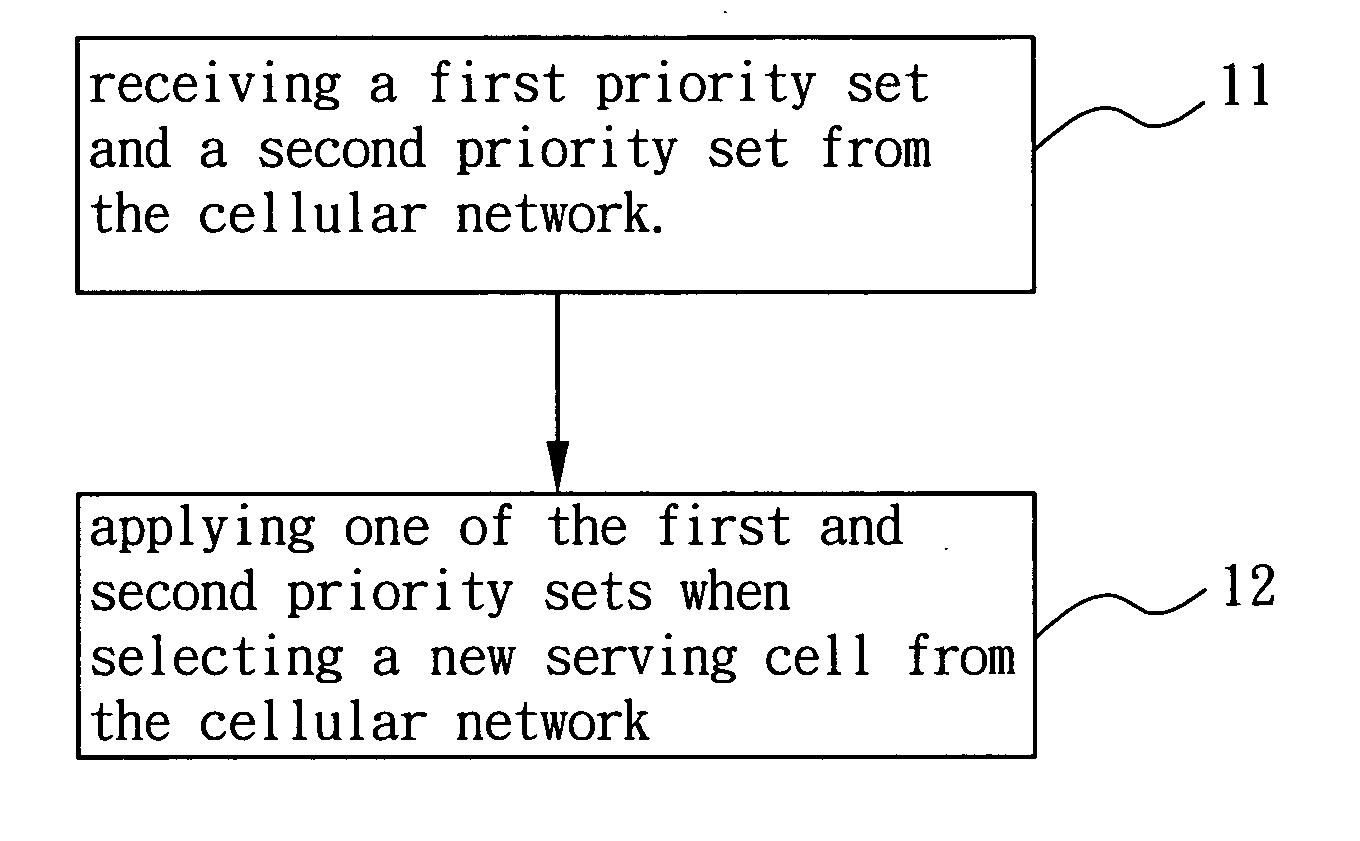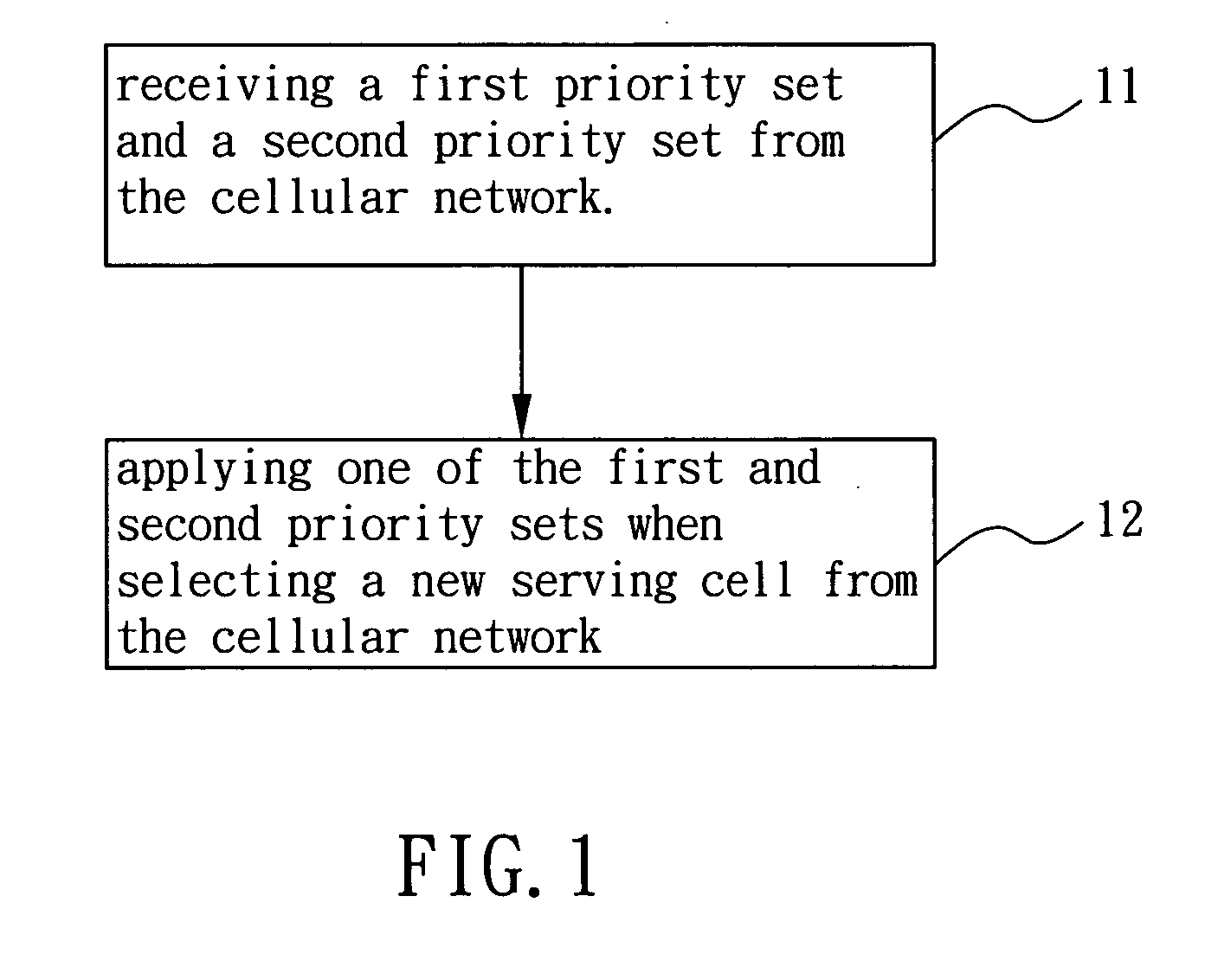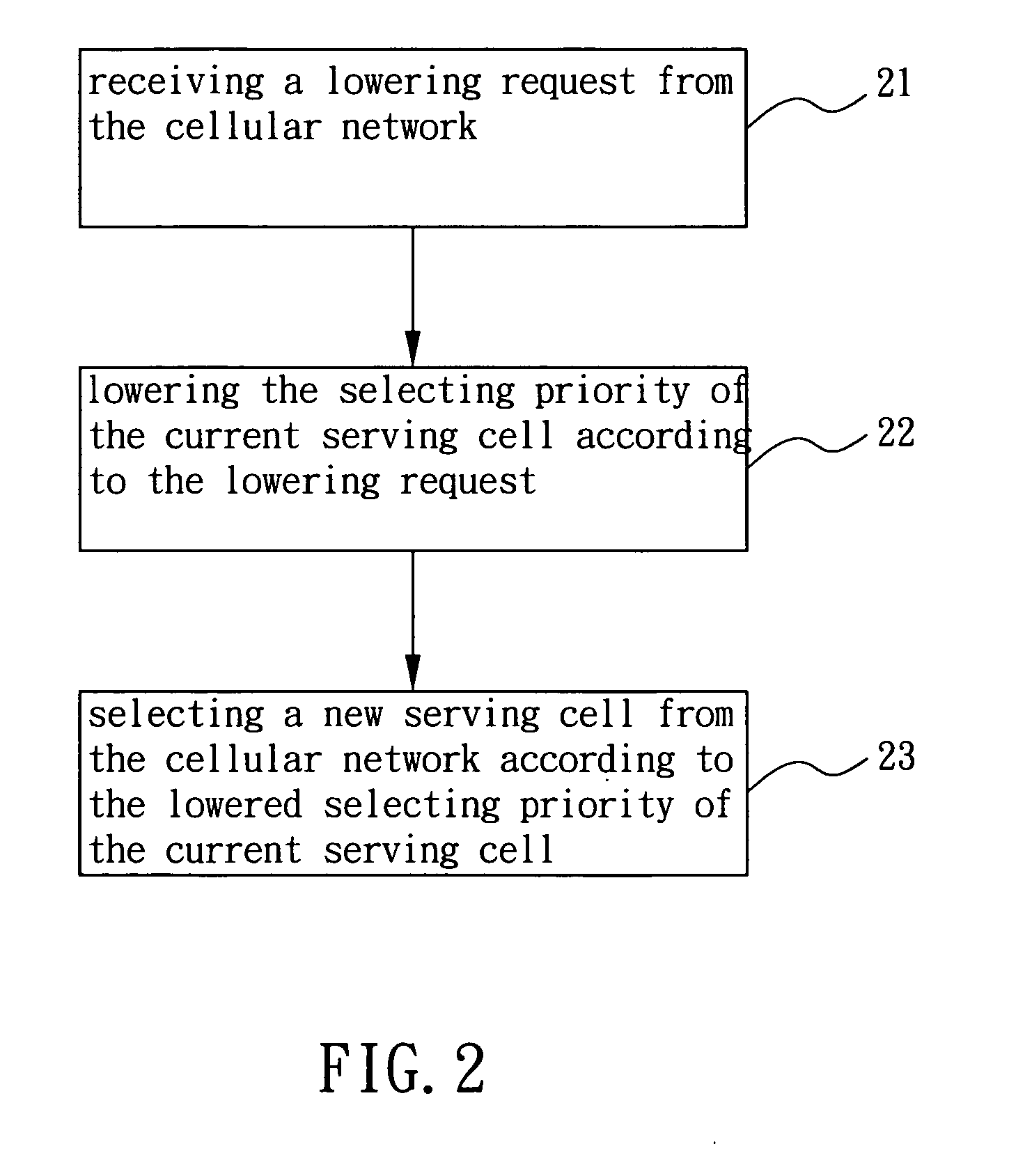Method for improving cell load balance in cellular network and associated user equipment
- Summary
- Abstract
- Description
- Claims
- Application Information
AI Technical Summary
Benefits of technology
Problems solved by technology
Method used
Image
Examples
Embodiment Construction
[0023]Reference will now to be made in detail to embodiments of the present invention, which are illustrated in the accompanying drawings. FIG. 1 is a flow chart of a method for improving cell load balance in a cellular network according to the first embodiment of the present invention. The cellular network can be, but not limited to, a UMTS network or a LTE network (e.g. LTE-Advanced network). The method is used in a user equipment (UE) of the cellular network. When the current serving cell of the UE is overloaded or heavily loaded, the method can be applied to direct the UE to select or reselect another less loaded serving cell, thereby reducing the load of the current serving cell and thus achieving more balanced cell load.
[0024]In step 11, the UE receives a first priority set and a second priority set from the cellular network. Each of the first and second priority sets assigns a selecting priority to at least one carrier frequency or radio access technology (RAT) of the cellula...
PUM
 Login to View More
Login to View More Abstract
Description
Claims
Application Information
 Login to View More
Login to View More - R&D
- Intellectual Property
- Life Sciences
- Materials
- Tech Scout
- Unparalleled Data Quality
- Higher Quality Content
- 60% Fewer Hallucinations
Browse by: Latest US Patents, China's latest patents, Technical Efficacy Thesaurus, Application Domain, Technology Topic, Popular Technical Reports.
© 2025 PatSnap. All rights reserved.Legal|Privacy policy|Modern Slavery Act Transparency Statement|Sitemap|About US| Contact US: help@patsnap.com



